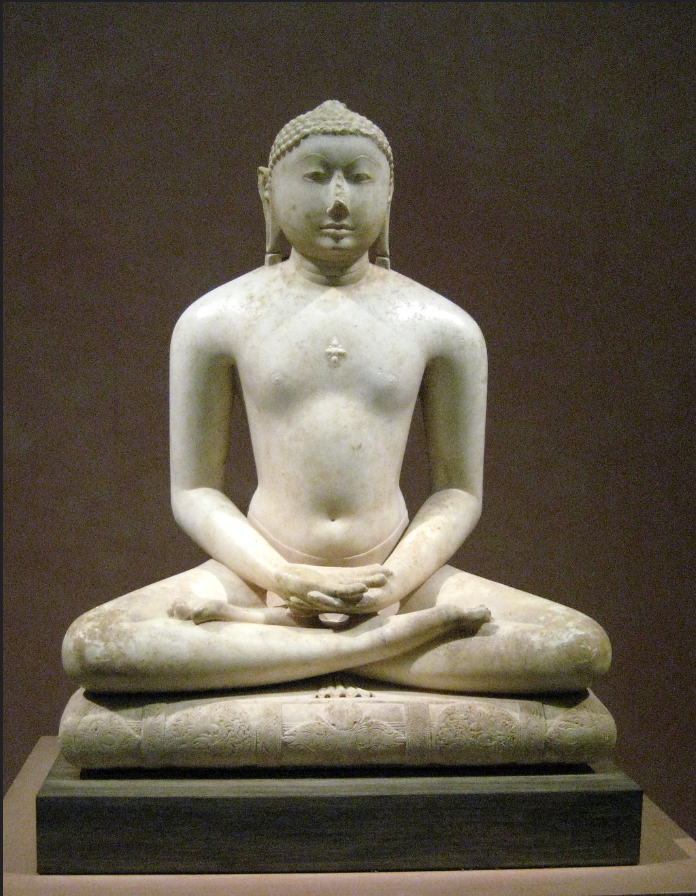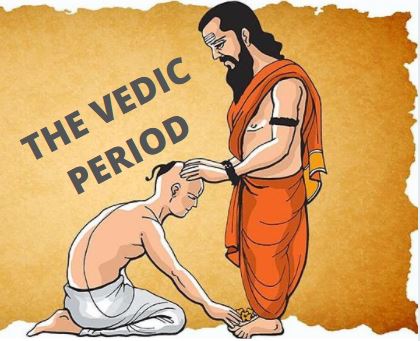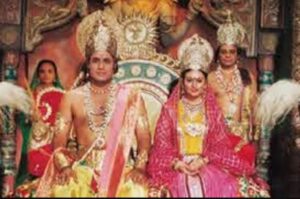
Jainism in India | Ancient History Short Notes
Jainism in India notes/study material for preparation of UPSC, BPSC, UPPSC and other State PSC Examinations.
Home » UPSC Study Materials » Prelims Express » Ancient History Short Notes » Vedic age and literature | Ancient History Short Notes

Vedic Literature notes/study material for preparation of UPSC, BPSC, UPPSC and other State PSC Examinations.
The Vedic period is the period in the history of India when the Vedas were composed. This period started around 1500 B.C. with the arrival of Aryans to north-western parts of India. Their initial settlements were in the valleys of the north-west and the Punjab plains. Later, they moved further into Indo-Gangetic plains.
The Vedas composed during this time are the main source of information about this period.
Aryans were not a separate race but a linguistic group of semi-nomadic pastoral people who spoke a common Indo-Aryan language – ‘Vedic Sanskrit’.
The original home of the Aryans has been a controversial question and hence, there are several theories given by different scholars.
For example :
Central Asiaan theory propounded by Max Muller suggests that the original home of the Aryans was in the Russian steppes lands and the area around the Caspian Sea. From there, they gradually migrated to different parts of Asia and Europe and entered India in about 1500 B.C.
Bala Gangadhara Tilak argued that the original home of the Aryans was the Arctic region.
Swami Dayanand Saraswati in his famous Satyarth Prakash propounded that the original home of the Aryans was Tibet.
However, the theory of southern Russia is widely accepted by historians.
Not much. We have a very limited archaeological evidences which prove the migration of Aryans.
Most important evidence in this regard is the Boghazkoi tablet inscription found in eastern Turkey. The Gods mentioned in this inscription are Indra, Varuna, Nasatya which are also the Rig-Vedic gods mentioned in Rig Veda itself.
There are also few similarities in hymns of Rig-Veda and Avesta (Sacred book of Zorastrians ).
These similarities make historians think that these people might have originated from the same area but migrated to different places.
 When the Aryans migrated towards in indian subcontinent, they initially settled in the region called ‘Sapta Saindhava’ which included Afghanistan, Swat Valley of Punjab and some parts of the Indo-Gangetic plain.
When the Aryans migrated towards in indian subcontinent, they initially settled in the region called ‘Sapta Saindhava’ which included Afghanistan, Swat Valley of Punjab and some parts of the Indo-Gangetic plain.
‘Sapta Saindhava’ derives its name from seven rivers flowing through that region( Indus and its five tributaries + Saraswati ).
The period from 1500 BC to 600 BC is considered as Vedic Period which is divided into two parts :
We will study about both of periods in great detail. But first let’s study about the most remarkable feature of this time – The Vedic Literature.
The Vedic literature has been broadly classified into two categories – Shruti and Smriti.
Shruti
Shruti literally means ‘that which has been heard’. They are the most-sacred assemblage of Hindu literature. They are considered to be the product of divine revelation which have been heard and transmitted by sages since the time immemorial. Hence they are considered divine and eternal.
All four Vedas, Brahmanas, Aranyakas and Upanishads come under Shruti literature .
Smriti:
Smriti literally means ‘that which is remembered’.
They are the post Vedic Classical Sanskrit literature which are considered less authoritative than Shruti. They are supplementary work and might change over time.
Vedangas, Shad Darshana, Puranas, Upvedas, Agamas, Upangas come under Smriti literature .
Lets now study the shruti literature in detail as they are more sacred, canonical(and also important for our exam).
The term ‘Veda’ literally means ‘superior knowledge/supreme knowledge/knowledge storehouse’. They are the most sacred and authoritative text among all the Vedic literature. Vedas are also called Apaurasheya ( Not created by man but god gifted) and Nitya ( existing till eternity).
There are four Vedas:
Let’s know more about them.
Oldest among all the four Vedas. It is known as “First testament” of mankind. It was composed around 1600 B.C. to 1200 B.C.
It is a collection of 1028 hymns which were sung in praise of different Rig-Vedic gods.
It is divided into 10 Mandalas(Parts). 2nd to 9th Mandalas are older and were composed first. 1st and 10th Mandalas were composed later hence they are the younger.
Third Mandala of Rig Veda contains the famous Gayatri Mantra which was compiled in the praise of sun god Savitri.
Tenth Mandala contains Purusha Sukta from which is considered to be the source of varna system.
The Yajur Veda mainly contains the details about various rules/rituals that were to be said by a priest at the time of sacrifice/Yajnas. In short, this is a book of sacrificial rules.
This has also been divided into Black(Krishna) Yajurveda and White(Shukla) Yajurveda.
Krishna Yajurveda – Mixture of mantras(verses) and explanatory matter.
Shukla Yajurveda – Clear separation of mantras and explanatory matter ( Explanatory matter has been separated and grouped into Satapatha Brahmana ( Brahmana – Commentaries on the Vedas)).
It is called the book of music and chants.
It sets the hymns of Rigveda into rhythm. The origin of Indian classical music can be traced to Sama Veda .
It contains a total of 1549 hymns.
Atharvaveda describes the early traditions of magic and cure of diseases. It is also called the Veda of magical formulas.
It contains around 730 hymns.
Atharvaveda was mainly composed by two groups of rishis/Vedic scholars known as the ‘Atharvanas’ and the ‘Angiras’. Therefore, previously it was also called ‘Atharvan-girasa’.
The Brahmanas are the prose texts which provide explanation and meaning of the hymns of Vedas. Each Veda has its own Brahmanas. Below table lists the most important Brahmanas which are associated with their respective Vedas.
The Aranyakas are the forest books which were written for the Rishis and students living in the forests. They are the concluding portions of the Brahmanas, however, because of their distinct character, they are categorised as a separate group of literature.
They do not put much emphasis on rites and ritual ( as Brahmanas do) but show the path of meditation, philosophy, mysticism and moral values. They work as a bridge between Karma marga ( advocated by Brahmanas ) and the Jnana marga ( advocated by Upanishads ).
There are only seven Aranyakas available and there is no Aranyaka attached to the Atharva veda.
Upanishads are considered the last layer of Vedic literature therefore they are also called Vedanta. Their subject matter is Philosophical and they mainly deal with matters like Atman( soul/Self), Brahman ( Ultimate reality ), rebirth etc.
They focus on the ultimate goal of the Vedas which is to achieve the Moksha or Supreme Bliss and suggest the path of knowledge to achieve the same.
There are a total 108 Upanishads. Some of the important Upanishads are – Chandogya Upanishads, Brihadaranyaka Upanishads, Katha Upanishads, Mundaka Upanishads etc.
The latest Upnishad is Muktika Upnishad which was recorded by Dara Shikoh whereas oldest Upnishad is Vrihadaranyaka Upnishad.
Conversation of Yama and Nachiketa is the subject-matter of Katha Upanishad.
Satyameva Jayate in the National Emblem has been taken from Mundaka Upanishad.
This completes the study of Shruti literatures of Vedics period which are considered most sacred and authoritative. Let us now read about the Smiriti literatures.
The word Purana literally means ‘ancient’ or ‘old’.
Puranas describe ancient legends and consist of genealogies of kings, history of the universe from creation to destruction and philosophy of Hinduism. Several Puranas are named after major Hindu deities such as Vishnu, Shiva, Brahma and Shakti.
There are 18 major Puranas. Some of the important ones are :
 Ramayana is one of the two major Sanskrit epics of ancient India, the other being the Mahabharata.
Ramayana is one of the two major Sanskrit epics of ancient India, the other being the Mahabharata.
Created by Maharishi Valmiki, Ramayana narrates the life of Rama, prince of the legendary kingdom of Kosala. The story follows his fourteen-year exile to the forest urged by his father King Dasharatha, on the request of Rama’s stepmother Kaikeyi, his travels across forests with his wife Sita and brother Lakshmana, the kidnapping of Sita by Ravana (the king of Lanka ), which resulted in a war and finally Rama’s eventual return to Ayodhya to be crowned as a great king.
Ramayana Consists of 24,000 verses in seven books (Kandas).
There are Six Vedangas which are associated with the study and understanding of the Vedas.
They are :
Upaveda or ‘Applied knowledge’ are the traditional literatures which deal with subjects which are technical in nature such as Economics, Military Science, Music and Dance and Medical Sciences .
They are as follows:
Āyurveda: Deals in Medicine and associated with the Rigveda
Dhanurveda: Deals in Archery and associated with the Yajurveda
Gāndharvaveda: Deals with Music and Dance and associated with the Samaveda
Arthveda : Deals with Economics and associated with the Atharvaveda
Shat-Darshana are the six traditional philosophies or schools of thought that originated in the Indian subcontinent with contributions made by various individual thinkers over many generations.
Vedanta school further separated into six sub-schools, with each school producing its own series of commentaries. You can read more about sub-schools of Vedanta philosophy here.
This completes our study of vedic literature.
Revision is the key to success in Civil Services exam. We understand this very well. Therefore we have included a list of MCQs with detailed explanation.
In the next chapter we will study salient features of Rig-Vedic/Early-Vedic culture(Social and political life, Religion, Economic condition etc.).

Jainism in India notes/study material for preparation of UPSC, BPSC, UPPSC and other State PSC Examinations.
We are adding new Notes, Chapterwise MCQs, Quizzes, Previous Years Questions everyday
We are adding new Notes, Chapterwise MCQs, Quizzes, Previous Years Questions everyday